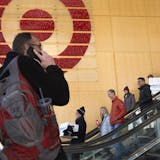Wednesday evening, in a game between two NBA teams not bound for the playoffs, an announced crowd of 18,179 watched Ricky Rubio score a career-high 33 points as the Timberwolves beat the lowly Los Angeles Lakers at Target Center.
Saturday night, when the Wolves host the Sacramento Kings — another also-ran — the team expects Target Center to be close to a sellout.
To Ryan Tanke, Wolves chief revenue officer, this is encouraging.
Certainly in terms of attendance, the Wolves are finishing the season rather strongly; an average of just under 16,500 fans have attended the team's six home games since the All-Star break. The Wolves have gone 5-1 at home in that stretch, including a victory over the Golden State Warriors on March 10 that drew 20,412, the largest crowd to ever watch a Wolves game at Target Center.
"We're pretty encouraged heading into the final stretch," Tanke said.
But much work remains to be done.
Despite the recent surge, the Wolves remain 30th in the NBA in attendance at 14,584 fans per game. Tanke is quick to say the team needs to build its base of full season-ticket holders, which is now just over 7,000.
"Until we get our membership base to the right spot, which is north of 10,000, you have a lot of seats there," Tanke said. "It will be a multiyear build to get us to that spot."



